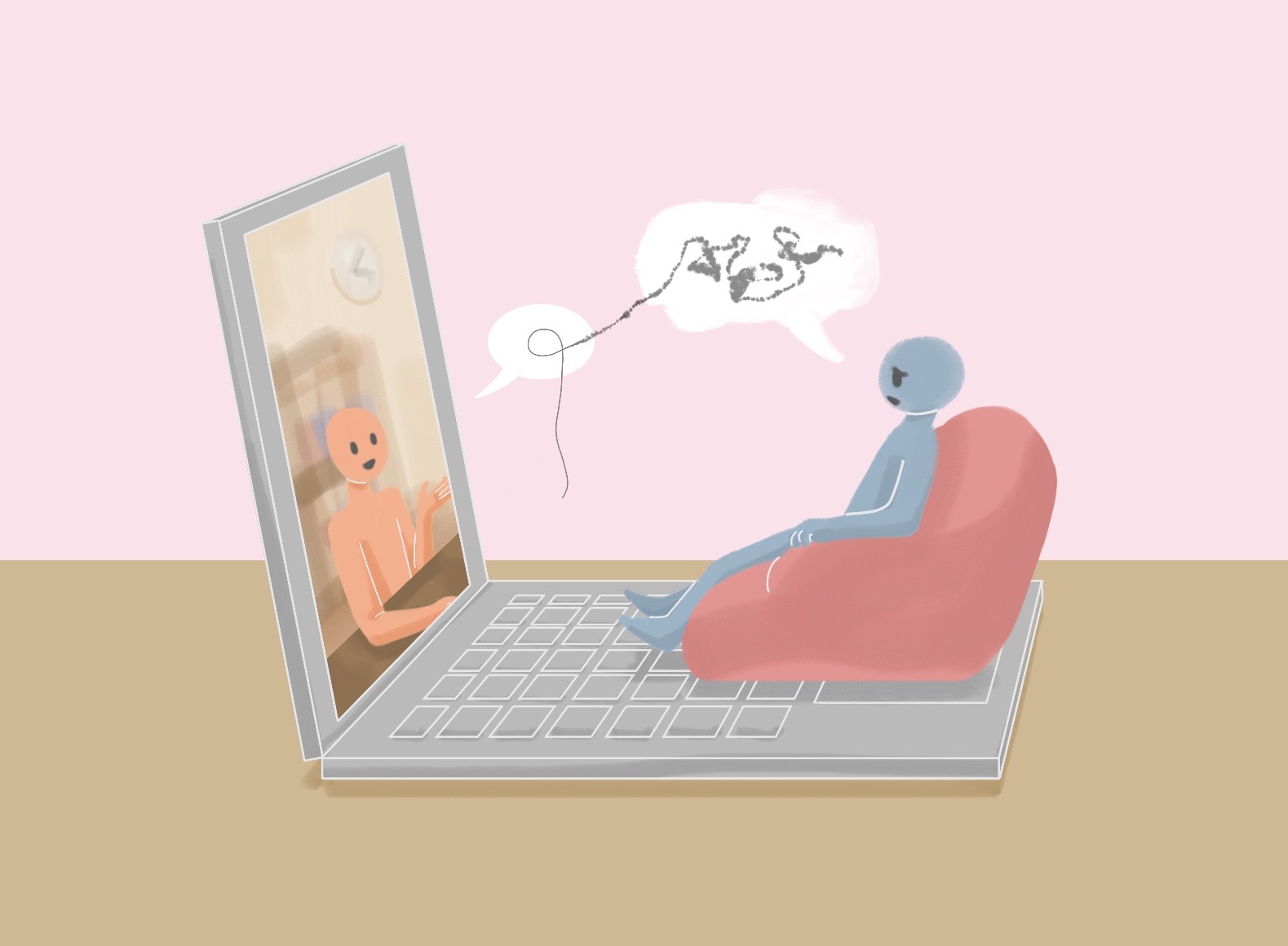

Therapy is commonly viewed as a patient lying on a gray, tufted couch while through their problems next to a professional. In contrast, an online alternative is becoming increasingly common, especially given the demand for mental health services during the COVID-19 pandemic.
Online or not, therapy’s general purpose is to help clients identify and address stressors in their lives and progress toward positive change. However, as licensed marriage and family therapist Alison Swisher shares, the opposing environments of online and in-person therapy have a significant impact on sessions.
“I see [more of a] shift when it’s family therapy … [or] couples therapy than I do for the one-on-one sessions,” Swisher said. “[This] … is because the body language between the [clients] is something that’s definitely lost when not in the room. The communication … between their expressions and even the way that they’re sitting on the couch, is really different than how it shows up [in person].”
Senior Hunter Black, who has done online therapy since last November, notes another challenge.
“When I’m [calling from home], my family members might pop [up somewhere],” Black said. “That’s a big reason as to why I may not open up about everything.”
Aragon sophomore Mia* revealed that the lack of privacy at home is a major reason they wouldn’t do online therapy during these times.
“I’m not comfortable talking … with my parents around,” Mia said. “They didn’t react very well [to my therapy needs]. My mom … thought I was ‘just stressed.’”
Despite these obstacles, online therapists performing virtual sessions can take advantage of online resources to help educate their clients. Lauren Kettmann, a doctor of psychology, gives an example.
“To inform my client about [a topic], I could share [information on] my screen,” Kettmann said. “[In person], I might bring information to the next session instead because I have to print something out.”
Black also noted the flexibility that comes with online therapy, as well as its laid-back atmosphere.
“[My therapist uses a platform that] … models a FaceTime call,” Black said. “Then we discuss [what’s going] on through a casual discussion.”
Some independent platforms efficiently connect clients with therapists. Founded in 2015, Lyra offers therapy services to businesses like Starbucks and Facebook through employee benefits. Lyra’s full-time staff navigates a client’s needs and connects them with a compatible therapist, breaking down the barriers to accessing care. Swisher has been working with Lyra for 3 1/2 years.
“It’s a fantastic resource for employees of the companies who have these benefits, [just like with] medical benefits or dental benefits,” Swisher said. “The statement that these companies are making is that overall health incorporates mental health care into the picture.”
The benefits encourage participation in online therapy by giving people the opportunity to partake in mental health care.
“I have a lot of people reaching out for the first time and saying ‘I’ve never done this … but it’s offered to me through my company,’” Kettmann said. “[Such efforts] … to highlight the importance of mental health … have given people permission to prioritize it.”
Online therapy has become even more necessary during these unpredictable, isolating times.
“[I’ve seen] for myself … the increase in the outreach of people trying to get connected to care,” Swisher said. “It was tremendous at the end of last year, even continuing. It’s a communal mourning around the loss of normalcy.”
The pandemic has halted the development of adolescents, who naturally form their identity by interacting with peers, contributing to the increasing need for therapy to help them cope.
“It was hard being [isolated] for a long time and not really having anyone to really come in contact with,” Black said. “[The need for social interaction] … [was] amplified by the pandemic.”
With easier accessibility to care and isolation, the stigma surrounding therapy has lessened.
“My hope is that the … acceptance of participation in therapy will remain as high as it has been during this pandemic,” Swisher said.
While progress has been made, Black has personally experienced the stigma around therapy.
“[Although my] … family was relatively open about therapy, they [had stigma] against me using medicine that the psychologist would prescribe,” Black said.
Online therapy’s sustainability post-pandemic varies depending on a client’s needs.
“For someone who has severe social anxiety who couldn’t get out of their house, half of the work would be getting to a therapy appointment in person,” Swisher said. “[This is when] … meeting in person would be necessary as a part of the treatment plan.”
Although it is unlikely that online therapy will ever surpass traditional therapy in quality, its convenience and flexibility drive the industry to make major strides towards connecting more people to care.
*Student’s name has been changed to protect their privacy.



